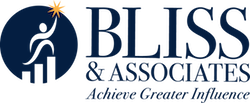
I don’t know about you, but I’ve been hearing some pretty upbeat news about projected hiring since Donald Trump was elected POTUS. Spoiler alert – this post is not about the election, Trump or anyone else.
Consider some recent anecdotal information I’ve heard:
- The transportation industry seems to be gearing up to buy more new equipment and hire new people.
- The commercial construction industry folks I know tell me the number of requests of proposals for new building, remodels of existing core building and interior space is growing significantly.
- Each day I seem to hear of a company relocating or expanding their operations in the Upstate of South Carolina where I live, mainly in manufacturing. This too will have a ripple effect into other supporting industries.
All this is pointing to continued economic growth and positive news indeed.
Based on the above, I’d like to address two related topics today:
- Retaining your top employees so they don’t answer the call for a “grass is greener on the other side” career opportunity
- When you do have to hire, ensuring you are selecting the top talent needed to achieve the results you seek.
The good news is that there will be job growth and expansion. The potential bad news is that this job growth is going to create turnover. Therefore, smart leaders such as you need to be prepared for both scenarios. Here are some considerations, first for the retention of top-performers, then for the selection of top-performers.
Retaining Top Performers – It is virtually impossible to retain every team member in your organization. People are people, and they are going to leave for a wide variety of reasons. Some of those reasons are out of your control including spouse relocation, family issues, decision to change careers, catching the entrepreneurial bug, etc.
Some of the reasons are definitely within your control. You can make a decision to do all you can to ensure the top performers (for example, the top performing 30% of your workforce) stay with your organization. Consider the following ideas:
- Actively and intentionally ENGAGE with them on a regular basis learning (not assuming you know) what’s important to them, how life outside the workplace is going for them, what you can do to provide more challenge to them, etc.
- Collaboratively create and commit to a personal development plan for them so they can maximize their natural strengths and talents
- Commit to your personal growth plan as a leader – as you raise your level of leadership effectiveness, the top performers will naturally rise with you.
- Intentionally keep them informed about what the organization is working on, what their challenges are and what your top 3-5 priorities for the next 90 days include. They can begin to think about these things and lend some assistance!
Selecting Top Performers – Whether you are in a growth industry or not, there are going to be times in the coming year when you will be faced with having to fill an open position, either to replace someone who has left or to add to your team. In either case, it is a GREAT opportunity to ensure you select a top performer who will be instrumental in achieving the results you have committed to delivering.
I have good news for you – there is a tried and true method to do this and it consists of the following steps:
- Create an accurate job description that identifies responsibilities, levels of authority, expected results and competencies necessary for success. Identify the character, culture and competency requirements of this position. Competencies are simply those talents, skills and behaviors that must be utilized to ensure successful performance. More on this later.
- Identify your selection team – who will help you interview and assess prospective candidates? Best practice is to have 3-5 people on this team. Equip them with the information from step one and ensure they all agree on what it is you are looking for. If this team isn’t aligned, you can’t possibly expect to hire a top performer.
- Conduct thorough interviews using behaviorally-based interview questions connected to the competencies you have identified. More on identifying the interview questions to ask later.
- Assemble the interview team within 24 hours of the interview to share, compare and contrast what they learned in the interview. Narrow the candidate pool to 2-4.
- Consider administering a validated assessment tool to provide insight into the capability of the smaller candidate pool.
- Consider conducting in-depth reference calls with the top candidate’s former bosses, peers, team members and/or customers. Check out their social media presence to help ensure a fit with your culture and character expectations.
- Develop a detailed on-boarding plan for their first 90 days at a minimum. Provide feedback along the way.
This tried and true method has worked quite effectively thousands of times for me and clients we have served over the years. Those times I have failed to hire a top performer can be traced back to not following one or more of the above steps – every time.
Here is more good news! To help you with step 3 above, we have assembled 100 competencies and over 1300 behaviorally-based interview questions for all 100 competencies in one source which you can acquire. For a sample, click here and for the full product, click here. I promise that you will not be disappointed.
Best regards!
Bill
